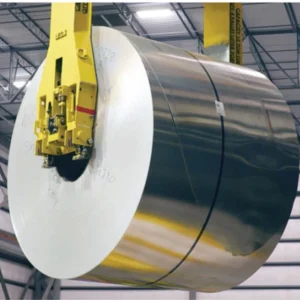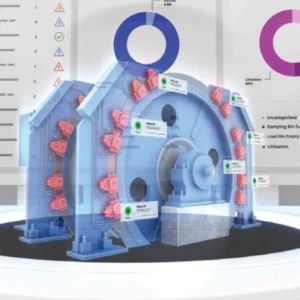
Mexico is a culturally vibrant and industrially diverse economy that has a sporadic history of economic development. Growth comes in fits and starts, but this large, diversified and relatively strong economy has many reasons to be positive, though the current volatility on the global geopolitical stage means nothing can be taken for granted.
Home to 130 million people, Mexico is currently the world’s 13th largest economy, and it relies on exports of machinery and transport equipment, steel, electrical equipment, chemicals, food products, petroleum and petroleum products to bolster the growth of its GDP. Currently, around 80% of Mexico’s petroleum is exported to its northern neighbour, the US, which relies heavily on Mexican oil to fuel its economic activity.
Relations between the US and Mexico have not always been easy. In Donald Trump’s first term as president, one of the major bones of contention was the US’s plan to build a border wall, with Mexico footing the bill. Building a “big, beautiful wall” to prevent illegal immigrants travelling to the US was the signature promise of Trump’s 2016 election campaign, understandably fuelling tension between the two countries.
Though it remains to be seen precisely what will happen to the wall now that Trump has taken office for a second time, partly because the focus has been on trade tariffs and government efficiency measures, the potential for a further souring of relations looms on the horizon.
With its prosperous oil sector, growing exports and strong prospects for growth in agriculture, mining, tourism and industrial activity, Mexico will have to play out a careful but bold strategy to make the best of its opportunities on the international stage.

Already, there are signs that economic growth is slowing. According to Deloitte, over the first three quarters of 2024, GDP grew by an average of 1.5% year-on-year. In the same periods in 2023, average growth was 3.6%, and 3.4% in 2022, which is a sign of a clear slowdown.
Indeed, the past three decades have seen Mexico underperform in terms of growth, inclusion and poverty reduction compared with similar countries, according to the World Bank. Between 1980 and 2022, the economy grew by just over 2% annually on average, slowing its progress towards closing the gap with highincome economies. In 2023, economic growth hit 3.2%, partly fuelled by a post-pandemic rebound, but slowed again in the first half of 2024 to just 1.8%.
The country’s poverty rate has been falling steadily, and a relatively stable macroeconomic framework has emerged, along with a strong manufacturing base. Nevertheless, the current slowdown is cause for concern. GDP grew only 0.9% year-on-year in Q4 2024, with lower investment, slowing consumption and a contracting energy sector partly to blame, although there was some growth in international trade. In its latest report, the Bank of Mexico cut its forecast for GDP growth in 2025 to just 0.6%.
Hard work ahead for Sheinbaum’s new regime
Investment contributed 3% less to GDP growth in 2024 compared with 2023, the biggest fall coming in non-residential construction investment, though there was also a marked decline in the purchase of imported machinery and equipment. The weakening of the Mexican peso against the US dollar was a key factor, but high interest rates and flat employment levels also played their part. The good news came in the form of growth in net exports during 2024, though that could be under threat as the US continues to ignite trade wars with even its closest neighbours.
Mexico’s 66th president, Claudia Sheinbaum, who became the country’s first female head of government when she took office in October 2024, has stepped into a potentially hostile international climate, where egos, economic protectionism and Elon Musk are just a few of the volatile ingredients in the geopolitical cocktail.
A scientist and an academic, as well as a politician, Sheinbaum won a l andslide victory in the June 2024 election against National Action Party (PAN) candidate Xóchitl Gálvez and now leads the National Regeneration Movement (Movimiento de Regeneración Nacional), commonly referred to as Morena, in a threeparty coalition.
As one of the most powerful women in the world, she must craft both a domestic policy and a foreign policy that will enable Mexico to play to its strengths, build solid international relationships, and secure the foundations for economic growth. No easy feat, given the unpredictable and highly adversarial state of global politics.
On the domestic front, Sheinbaum’s priorities will share much with previous regimes. Notably, combating crime will be high on the agenda, and she has announced a bold data-driven strategy that will focus on improvements in policing and intelligence, as well as increases in social spending to tackle the causes of crime.
One departure from her predecessor’s approach to organised crime – ‘abrazos, no balazos’, or ‘hugs, not bullets’ – is a much tougher approach that emerged in the first few weeks of the new regime. Sheinbaum has already had to defend violent confrontations between government forces and criminal gangs, in which the capture of cartel members resulted in civilian casualties. Her message is clear – she is cracking down on crime, particularly drug-related crime.

Alongside a programme of government reform, which includes a bill asserting constitutional supremacy set to limit legal challenges to constitutional amendments, Sheinbaum is also trying to simplify several government functions and remove bureaucracy. She has, for instance, done away with autonomous bodies with oversight of competition, transparency and telecommunications.
The real challenge, however, is to stimulate the economy, which requires changes in some key industries, not least the energy sector. The new government has already re-established the Federal Electricity Commission and state oil company Pemex as public entities, with the aim of prioritising public needs over profit.
Plan México
In February, the government released Plan México – the Mexico Plan – which enshrines Sheinbaum’s vision to put the country among the world’s top ten economies. The plan is a six-year strategy that involves collaboration between the federal government and the private sector. Setting out to significantly boost Mexico’s economic growth by 2030, it includes ideas to revitalise key industries, incentivise local and international investment and implement new regulatory frameworks that will encourage businesses to grow.
As well as pushing the country into the top ten, it aims to attract $100bn annually in foreign direct investment (FDI), create 1.5 million high-value jobs in advanced manufacturing and strategic industries, and increase domestic sourcing and consumption in priority sectors by 50%.
Furthermore, there are plans to expand national contributions to global value chains by 15% in industries such as automotive, aerospace, electronics, semiconductors, pharmaceuticals and chemicals.
The government also intends to boost local participation in public procurement by 50%, encourage the growth of pharmaceutical production and packaging capability, with a strong emphasis on advanced biotechnology, and encourage investments that align with ESG standards. It also wants to increase access to finance for small and medium-sized enterprises by 30%. Oh, and it is planning to make Mexico one of the world’s top five tourist destinations.
Crucially, there is some detail in the plan around specific industries. In the semiconductor sector, there is to be a doubling of local supply in the production of equipment, and a 10% reduction in the country’s dependency on imports. In the pharmaceuticals and medical device industry, targets include an increase in FDI, securing $2bn in annual investments for clinical research initiatives, and boosting production of medical supplies by 15%.
Crucially for companies in the crane and hoist sector, Plan México includes specific goals for the significant industries such as automotive, petrochemicals, aerospace and energy. In automotive and transport, the goal is to increase vehicle production for domestic consumption by 10%, raise local content in vehicles by 15%, manufacture trains and components domestically, and double the export value of automotive and related products.
In the energy sector, the government wants to increase installed power generation capacity by 22,000MW, prioritising thermal, solar and wind energy projects, and develop natural gas pipelines in two states currently lacking access to this key resource.
In aerospace, the aim is to put Mexico among the top ten countries in terms of production value, and to boost local and regional content in aerospace exports by 10%. There is also a plan to design and manufacture components for a national constellation of observation satellites. The strategy is also to make great progress in agroindustry, water, urban transportation and many other sectors.
Part of the grand plan is the creation of the IMMEX 4.0 programme, which will modernise and strengthen the country’s export manufacturing capability. The programme will consolidate the certification IVA (value added tax) and IEPS (excise tax on products and services). The result will be reduced startup times for new businesses and, it is hoped, enhanced competitiveness in international trade.
The emphasis on public–private investments targeting major infrastructure projects is also a key feature of Plan México. Back in January, Sheinbaum was already able to announce an additional $277bn in investments from foreign companies, including funding for more than 3,000km of railway lines, in excess of $13bn to improve Mexico’s electrical generation capacities, and 16 projects to increase the population’s access to water.
The expansion of the rail network is of major significance and is a key pillar of the programme of public–private partnerships in infrastructure development. A constitutional amendment to establish passenger and freight railway transportation as a priority area for national development came early in her presidency.
The state can now recover control over railway lines for passenger transport and can grant concessions to private entities or assignments to public companies for passenger rail operations. The aim is partly to reduce traffic on highways and provide an accessible public transportation alternative.
Subsequently, the government announced plans to invest 157bn pesos ($7.7bn) during 2025 in the construction of new passenger and freight operations on key parts of the rail network. This will include the final section of the Tren Maya between Palenque and Chetumal, and the conversion of the 1,500km network into a mixed traffic railway that can handle freight as well as passenger services. This will require the construction of ten freight complexes – five intermodal terminals, four operating yards and a fuel loading spur.
In March, Sheinbaum kickstarted the construction of the Mexico City-Pachuca electric commuter train development, which will see high-speed trains run from Buenavista in Mexico City to Hidalgo state capital Pachuca. It is hoped that travel times will be reduced by up to 30% compared with travel by road.
Beyond rail infrastructure, the plan will also see 33bn pesos invested in the modernisation of six ports, including Progreso in Yucatán, and Ensenada in Baja California.
In the shadow of Trump
With the ambitious Plan México under way, Sheinbaum can make a strong claim that Mexico is back in business. Some believe that Mexico can still drive a nearshoring boom, though no one expects it will be easy. The global political landscape in which Mexico must assert itself is febrile, fragile and fraught with unexpected twists and turns.
Sheinbaum’s first round of international visits saw her meet with then-US President Joe Biden and Canadian Prime Minister Justin Trudeau. Since then, Trudeau has been replaced by Mark Carney and, more importantly, the US has seen a strong shift to the right under the second Trump administration.
In defining its policy on relations with the US, Mexico faces many potential pitfalls. The US may be encouraged by the country’s tougher approach to drug cartels, but it was only in October 2024 that diplomatic relations with the US ambassador to Mexico, Ken Salazar, were resumed. They were previously suspended due to US criticism of Mexico’s judicial reforms.
New diplomatic protocols now require Salazar to communicate with the Secretariat of Foreign Affairs in order to engage with the federal government, rather than speaking directly with members of the cabinet.
Sheinbaum has publicly congratulated Donald Trump on his electoral victory, but she has had to play a careful game in determining how to respond to his threat to impose a 25% tariff on imports from Mexico. Her initial letter in response to that threat warned that “one tariff will follow another in response and so on, until we put our common businesses at risk”.
While Trump bemoans the flow of drugs and gang members across the country’s southern border, Sheinbaum has noted with concern the flow south of firearms from the US into the hands of criminal gangs. When Trump’s executive order implemented tariffs, Sheinbaum threatened to retaliate with both tariffs and other tools, and quickly reached an agreement to delay the imposition of tariffs for one month. The deal included a pledge from Sheinbaum to deploy 10,000 National Guard troops to the US border, and Trump promising to clamp down on the trafficking of weapons to Mexico.
For now, the balancing act is paying off, and Sheinbaum’s approach has been deemed more successful than many of her counterparts on the international stage. So far, so good, but even a week can be a long time in politics.
Mexico will hope the current strategy pays off, as the flow of exports into the US will be a critical part of any plan to significantly grow the economy. In 2024, more than $137bn of vehicles (excluding rail) flowed north across the border, along with $105bn in machinery, $87bn in electronic and electrical equipment and more than $7bn of iron and steel.
To put it starkly, exports account for more than one-third of Mexico’s GDP, and over 80% of its exports flow into the US. Conversely, only 1% of US GDP comes from exports of goods to Mexico.
With growth forecasts for Mexican GDP already below 1% for the year, the threat of US tariffs is serious. Uncertainty about the prospect of a hike in costs for US importers buying Mexican goods is likely to dampen the appetite among global investors to put money into Mexico.
It is early days for the bilateral relationship between Trump and Sheinbaum, so while there are glimmers of hope, there is always a risk that things will turn sour. So, the future of Mexico’s industrial and infrastructure development is unclear, despite the ambitious plans that are in place.
So, what does all this mean for the crane and hoist industry? Well, there is no clear answer. There are certainly opportunities in key sectors such as automotive, and the drive for infrastructure development will provide scope for new projects, but with international trade such an important factor, the future is not entirely in Mexico’s own hands.





